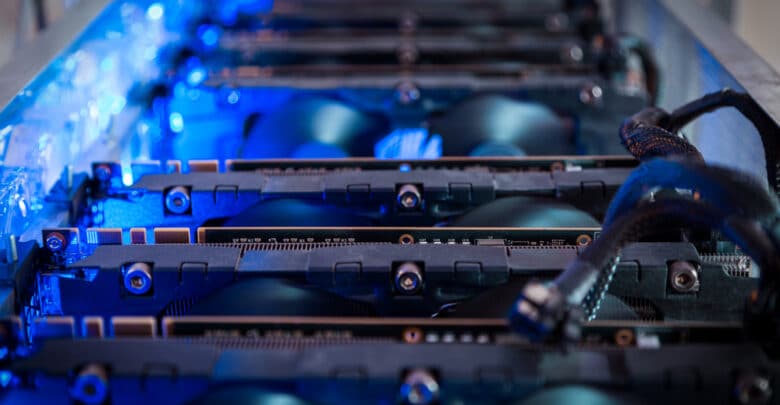How to Mine Crypto?

This step-by-step instruction will help you get started mining on your own. There are several mining methods and processes. Moreover, particular mining techniques may need to be modified to work better with these phases, while others may need extra precautions.
However, remember that mining is only occasionally straightforward or lucrative due to fluctuating energy costs and variable cryptocurrency exchange rates. As a result, you must set up the mining equipment properly and make payments to maintain operations in addition to the initial investment.
Step 1. Select your crypto
The difficulties associated with cryptocurrency mining differ. The work required to mine a block is referred to as difficulty. As additional miners join the network, the problem of hashing grows owing to greater competition. But, when miners leave the site, the hashing difficulty drops, making it more straightforward to mine new blocks.
Individual miners have a more difficult time making money mining the more significant cryptocurrencies since their criteria are more demanding. Therefore, Bitcoin miners use potent ASICs and mining pools to increase their chances of winning.
Proof of Work (PoW) cryptocurrencies such as Dogecoin and Ethereum Classic have often been mined apart from bitcoin. On the other hand, Altcoin networks might be less busy and provide more significant opportunities for smaller miners.
Altcoins may have a more significant growth potential due to their untapped potential. Also, mining methods that utilize less energy may be employed since they do not need as much processing power.
In the worst-case scenario, mining for alternative cryptocurrencies might be more volatile if the protocol is corrupted or abandoned. Consequently, you must improve your mining equipment and spend more money than expected. Mining bitcoin, for example, was formerly thought to be achievable using computers, but this is no longer the case.
Step 2. Choose your Mining Equipment
Sturdy mining equipment helps miners compete by increasing their chances of mining the next block. ASIC miners are designed with a single aim, making them the ideal option for bitcoin mining. GPUs, on the other hand, are still helpful in specific networks.
Moreover, specific cryptocurrencies need mining equipment that is specifically designed for them. Helium’s crypto miner, for example, takes advantage of radio technologies to provide wireless network coverage. Additionally, the device is placed in an open area with a clear view.
This means you should always ensure your mining rig is compatible with the coin of choice.
Step 3. Set up a Crypto Wallet
A cryptocurrency wallet is also required to store the keys to the coins obtained during mining. When you earn a mining reward, the mining application will send the coins to your selected bitcoin wallet address. For example, you may use the Trust Wallet to connect to hundreds of projects across blockchains and securely store your Bitcoin.
Step 4. Configure your Mining Device
To mine bitcoin, you must first download specialized mining software. The best location to locate the software is on the website of the coin you wish to mine. By doing so, you may avoid utilizing bogus applications and guarantee that you have the correct software for each currency.
The majority of mining software may be downloaded and used for free. Moreover, some cryptocurrencies provide a variety of software alternatives and are typically compatible with numerous operating systems. But, before deciding on mining software, performing your own research (DYOR) is always a brilliant idea to understand the differences better.
Another advantage of setting up the mining device is creating a strategy to keep track of power expenditures. Reviewing previous power bills and predicting mining costs are excellent places to start. Sadly, the energy consumption of a mining setup may lead you to spend more money on power than you would on mining.
Additionally, remember that mining rigs generate noise as they warm up. As a consequence, consider locating them someplace safe that receives enough cooling and notifying your neighbors of any possible increase in hum.
Step 5. Consider Joining a Mining Pool
Individual miners may save money on gear and power by joining mining pools. But, you are unlikely to be the first miner to estimate the correct hash since a block reward is only granted to the first miner who succeeds. Hence, even if you were to operate a slew of incredibly strong ASICs, your percentage of total Bitcoin hashing power would be negligibly little.
Mining pools produce a bigger mining pool, boosting the chances of discovering the next block. In other words, pooling your hashing power with a mining pool may make you more money than mining solo.
In most mining pools, a coordinator organizes the miners to reduce mistakes. Coordinators, for example, should guarantee that miners use a variety of nonce values to avoid wasting hash power. Also, coordinators regularly distribute mining prizes among pool members.
Tokenhell produces content exposure for over 5,000 crypto companies and you can be one of them too! Contact at info@tokenhell.com if you have any questions. Cryptocurrencies are highly volatile, conduct your own research before making any investment decisions. Some of the posts on this website are guest posts or paid posts that are not written by Tokenhell authors (namely Crypto Cable , Sponsored Articles and Press Release content) and the views expressed in these types of posts do not reflect the views of this website. Tokenhell is not responsible for the content, accuracy, quality, advertising, products or any other content or banners (ad space) posted on the site. Read full terms and conditions / disclaimer.




